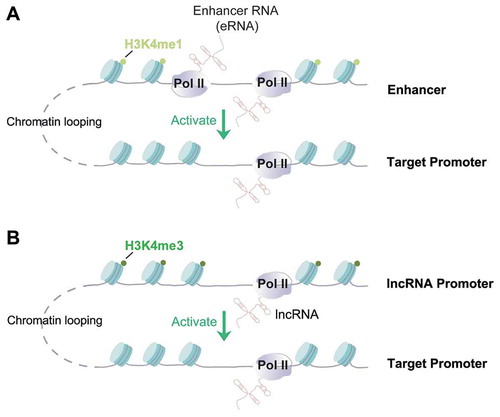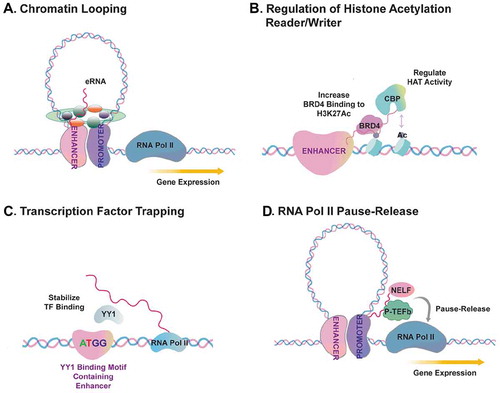Figures & data
Table 1. A list of reported eRNA binding proteins and underlying mechanisms.



